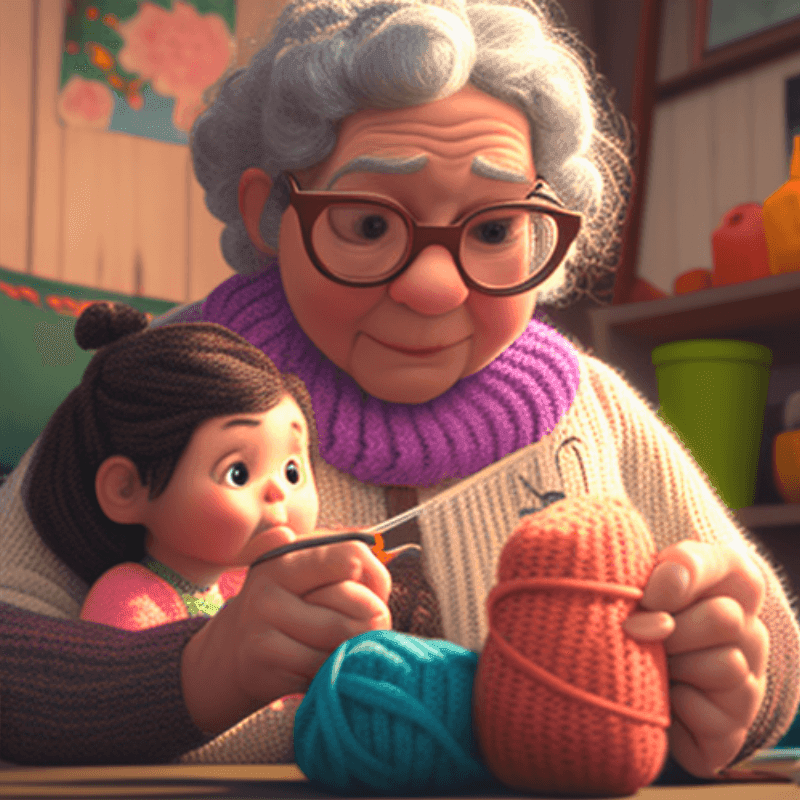Crocheting is a fun and rewarding hobby that allows you to create beautiful, handmade art pieces. Whether you're a beginner just learning the basics or an experienced crocheter looking to try new techniques, there's always something new to learn and explore. One important stitch to know is the slip stitch, a versatile and useful tool in any crocheter's toolkit.
This guide will cover everything you need to know about the slip stitch in crochet, including what it is, how to do it, and how to use it in your projects. By the end, you'll be a pro at slip stitching and ready to tackle any project that comes your way!
What is a Slip Stitch in Crochet?
A slip stitch (abbreviated as "sl st") is a basic crochet stitch used to move the yarn along the crochet fabric without adding any height or texture. It's often used to join two pieces of crochet fabric together. Still, it can also be used to create decorative elements or to change colors in your work.
The slip stitch is one of the smallest and most discreet stitches in crochet, making it a great choice for projects where you want a seamless and smooth finish. It's also a very useful stitch for working in the round. For example, it allows you to join the end of a round to the beginning without adding extra height to the fabric.
How to Do a Slip Stitch in Crochet
Now that you know what a slip stitch is, let's review how to do one. Follow these step-by-step instructions to master the slip stitch in no time!
- Start by making a chain of stitches. To do this, yarn over (abbreviated as "yo") the hook and pull the yarn through the loop on your hook. Repeat this process until you have the desired number of chains.
- Insert your hook into the second chain from the hook. To do this, you'll need to hold the crochet hook in your dominant hand and the yarn in your non-dominant hand.
- Yarn over and pull the yarn through the chain stitch and the loop on your hook. This is called a "yarn over, pull through" (abbreviated as "yo, pull through") and is the basic move of the slip stitch.
- Repeat steps 2 and 3 until you reach the end of the chain. You should now have a row of slip stitches along your chain.
- To start a new row of slip stitches, turn your work and insert your hook into the first slip stitch of the previous row. Yarn over and pull through to complete the slip stitch. Continue working in this way until you reach the end of the row.
That's it! With a little practice, you'll be a pro at slip stitching in no time. Here's a quick summary of the steps:
- Chain a row of stitches
- Insert your hook into the second chain from the hook
- Yarn over and pull through the chain stitch and loop on your hook
- Repeat until you reach the end of the row
- Turn your work and insert your hook into the first slip stitch of the previous row
- Yarn over and pull through to complete the slip stitch
Tips for Slip Stitching in Crochet
Here are a few tips to help you master the slip stitch in crochet:
- It's important to keep your tension even when slip stitching. If your stitches are tight enough, your fabric may become distorted, and your work will be stiff and flexible if they're tight enough. Practice makes perfect, so keep at it until you find the right tension for your slip stitches.
- Be careful not to yarn over too tightly when completing a slip stitch. This can cause the fabric to pucker and become distorted. Instead, try to yarn over smoothly and evenly, pulling the yarn through the loop on the hook with a gentle tug.
- The slip stitch is often used to join two pieces of crochet fabric together, so it's important to match the tension of the slip stitches to the tension of the rest of your work. This will help to create a seamless and cohesive look.
- If you're working in the round and using slip stitches to join each round, it's important to count your stitches to ensure you have the right number. It's easy to lose track of your stitches when working with the slip stitch, so take your time and count carefully to ensure that your work stays on track.
- Finally, experiment with different crochet hooks and yarns to find the best combination. Different yarns and hooks can produce different results when slip stitching, so it's worth trying out a few options to find the one that feels most comfortable and produces the best results for your projects.
Examples of Slip Stitch in Crochet
Now that you know how to do a slip stitch, let's look at some examples of how it can be used in crochet projects.
- One common use of the slip stitch is to join two pieces of crochet fabric together. This is often done in the round, as it allows you to seamlessly join the end of a round to the beginning without adding extra height to the fabric.
- The slip stitch can also create decorative elements in crochet projects. For example, you can use slip stitches to create a chain of stitches along the edge of a project or a border around a piece of fabric.
- Another way to use the slip stitch is to change colors in your work. By slip stitching with a new color, you can create intricate colorwork patterns and designs in your crochet projects.
- Finally, the slip stitch can create a dense and cohesive fabric in crochet projects. By working multiple rows of slip stitches, you can create a smooth and uniform fabric with no visible stitches or holes.
Conclusion
We hope this guide has helped you to understand the slip stitch in crochet and how to use it in your projects. With a little practice, you'll be a pro at slip stitching in no time! Feel free to experiment with different yarns, hooks, and techniques to find the best combination. Happy crocheting!

